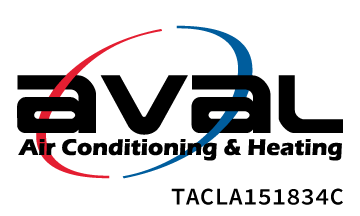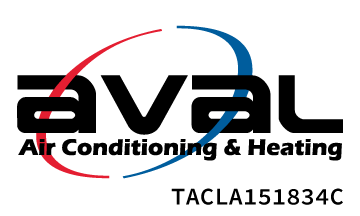Building a new residential or commercial space involves making numerous important decisions, including how to create a comfortable indoor environment. Choosing the right air conditioning system is essential for both energy efficiency and occupant comfort. We at Aval Air Conditioning & Heating will discuss four critical considerations to keep in mind when planning an AC installation for your new construction project in Irving, TX. By understanding these aspects, you’ll maximize the performance and efficiency of your air conditioning system, leading to long-term savings and satisfaction for you and your building’s occupants.
Assessing Your Building's Cooling Load
To determine the right size of the AC unit for your new construction, you’ll need to evaluate the building’s cooling load. This calculation includes factors such as the building’s square footage, insulation levels, window sizes, and even the prevailing climate in your area. Our professionals have the expertise to precisely determine your building’s cooling needs and recommend an AC system size that is both efficient in cooling spaces and cost-effective in terms of energy consumption.
Refrigerant Leaks: What Causes Them and How to Fix It
There are various types of AC systems available, each with its unique advantages and suitability to different building styles. When selecting the right system for your new construction project, it’s essential to consider the specific requirements of your space and your budget. Some common options include:
- Split Systems: These units consist of an outdoor compressor and an indoor air handler, perfect for residential homes and smaller commercial spaces with limited square footage.
- Package Units: Ideal for commercial buildings, package units combine the heating and cooling components into a single outdoor unit, simplifying the installation process.
- Ductless Mini-Splits: These versatile systems are ideal for new construction projects that require individual temperature control in different areas or where ductwork installation would be impractical or expensive.
- Heat Pumps: A popular choice in mild climates, heat pumps provide both heating and cooling, making them an energy-efficient option that can lead to long-term savings.
Our experts can guide you through the different system types and help select the perfect AC solution for your new construction project, ensuring optimal performance and comfort.
Installing Adequate Ventilation and Filtration
In addition to the cooling component of your AC system, proper ventilation and air filtration are vital for achieving a healthy and comfortable indoor environment. Installing an adequate ventilation system prevents the buildup of contaminants, moisture, and stale air which can negatively impact your occupants’ well-being and overall air quality.
Apart from exhaust fans for high-moisture areas such as bathrooms and kitchens, you may want to consider a dedicated ventilation system like an energy recovery ventilator (ERV) or a heat recovery ventilator (HRV) to ensure proper air exchange between the indoors and outside.
Incorporating high-quality air filtration systems into your AC installation further improves indoor air quality by capturing dust, allergens, and other pollutants. Our technicians can help recommend the right type and size of filter for your specific space, along with a maintenance schedule to keep your filtration system running efficiently.
Planning for Future AC Maintenance and Upgrades
Proper planning during the design and installation phase of your new construction project can streamline future AC maintenance and upgrades. Some key considerations include:
- Accessibility: Ensure that your AC components, such as the outdoor compressor, air handler, and ductwork, are accessible for routine maintenance and repairs. This improves the efficiency of inspection and service tasks, reducing downtime in the event of a problem.
- Expandability: If your building may require additional cooling capacity in the future, consider installing a system that is easily expandable or adaptable to increased demands.
- Upgrade Compatibility: As technology progresses, new advancements in HVAC control systems and automation may become available. Design your new construction project with future upgrades in mind, so you can easily incorporate these improvements when the time comes.
Our experienced team can help you plan your AC installation with future maintenance and upgrades in mind, ensuring a system that is both efficient and adaptable to advances in the HVAC industry.
Conclusion: Ensuring a Successful AC Installation for Your New Construction
Incorporating these four crucial considerations into your new construction AC installation planning will contribute to a comfortable, energy-efficient, and cost-effective indoor environment for your building’s occupants. By partnering with our expert technicians at Aval Air Conditioning & Heating, you can ensure that your project benefits from the highest standards of professionalism and expertise.
From the initial assessment of your building’s cooling load to selecting the ideal AC system type, designing effective ductwork and ventilation systems, and even planning for future maintenance needs, our team is dedicated to helping you achieve the best possible outcome for your new construction project. Don’t compromise on the comfort and efficiency of your building – contact us today and let our experts guide you through your AC installation in Dallas, TX.





